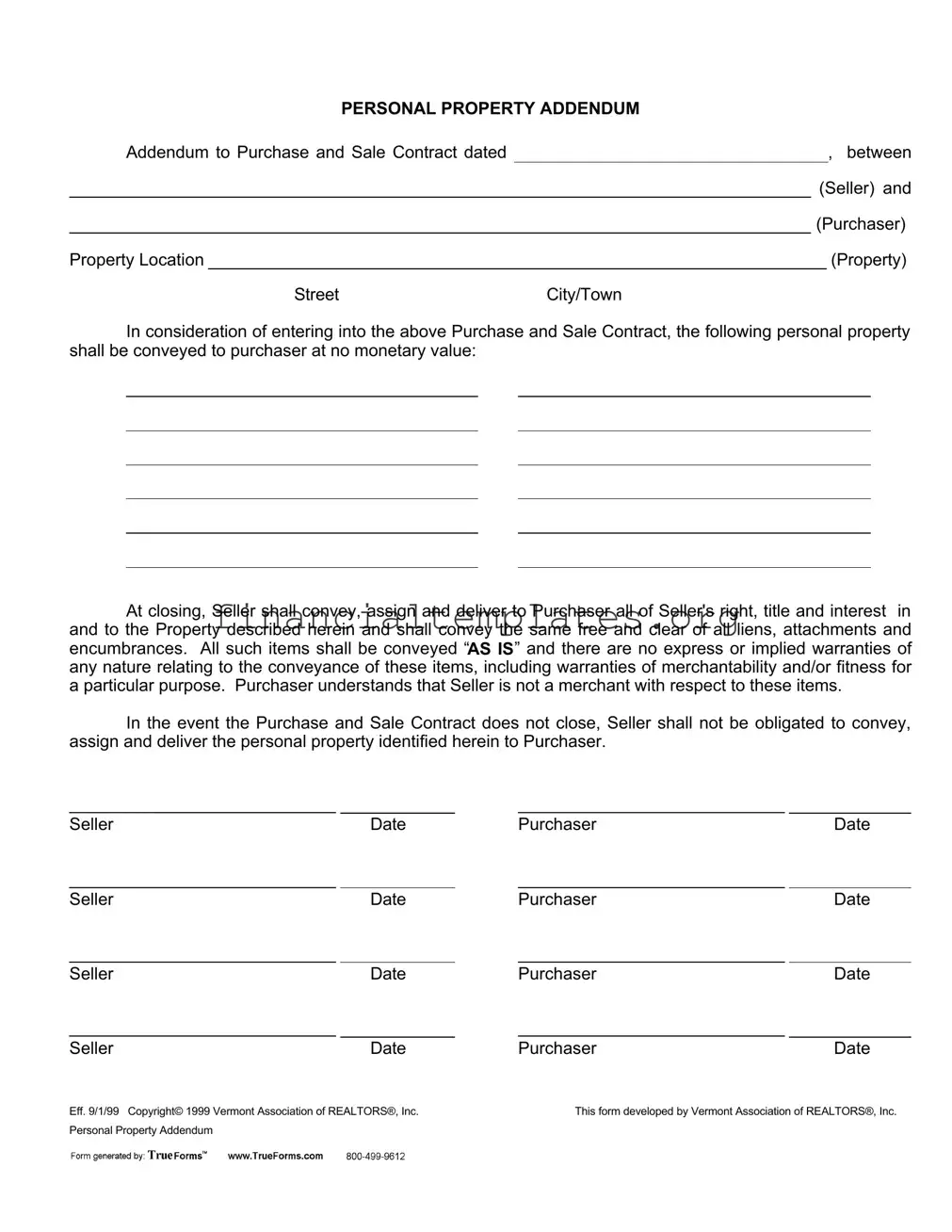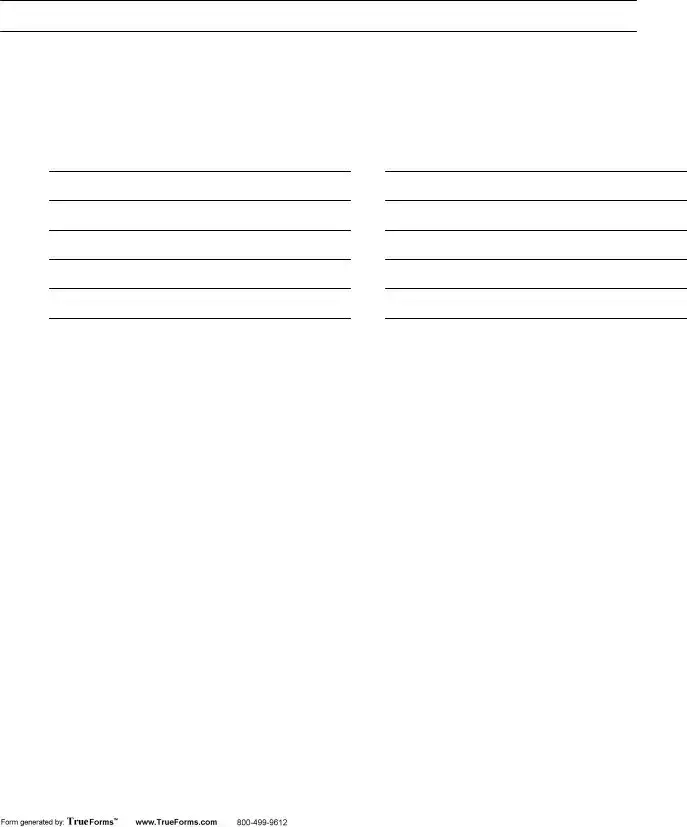The "Personal Property Bill of Sale" is a document that shares similarities with the "Personal Property Addendum" in the Purchase Addendum Vermont form. Both documents are critical when transferring ownership of personal property from one party to another. The key similarity between them is their main purpose: to list and define the personal property items being sold and transferred along with their condition, but the Bill of Sale typically involves a monetary transaction, unlike the transfer at no monetary value described in the Personal Property Addendum.
An "Amendment to Real Estate Purchase Contract" is another document bearing resemblance to the "Personal Property Addendum" in the Purchase Addendum Vermont form. This document is used when the parties involved in a real estate transaction need to make changes or additions to an existing Purchase and Sale Contract. Just like the Personal Property Addendum, it becomes a part of the original contract and outlines specific terms, conditions, or items to be included or excluded, highlighting flexibility in real estate agreements.
The "Property Disclosure Statement" is often used in real estate transactions to inform buyers about the condition of the property they are considering purchasing, similar to how the "Personal Property Addendum" outlines the as-is condition of personal property being conveyed. While the main focus of the Disclosure Statement is on the real estate itself, disclosing potential defects or issues, it shares the concept of transparency with the Personal Property Addendum, aiming to provide all necessary information for a well-informed decision.
A "Warranty Deed" is traditionally used to transfer real estate property with guarantees from the seller to the buyer that the title is clear of any claims or liens. This contrasts slightly with the "Personal Property Addendum," which specifies that the personal property items are conveyed as-is, with no express or implied warranties. However, both documents serve the essential function of transferring rights and interest in property (real or personal) from one party to another.
The "Real Estate Purchase Contract" itself, to which the "Personal Property Addendum" is attached, naturally shares a fundamental connection with the addendum. The Purchase Contract outlines the terms and conditions under which the real estate transaction will take place, including price, closing date, and contingencies. The Personal Property Addendum complements this by detailing specific personal property to be included in the sale, emphasizing the comprehensive nature of the transaction.
A "Quitclaim Deed" is used to transfer whatever interest a person has in a property without making any guarantees about the title's clearness. Like the "Personal Property Addendum" in its function to transfer interest, the Quitclaim Deed focuses on expediency and simplicity in transferring rights without warranties, mirroring the as-is basis of the personal property conveyance described in the addendum.
Lastly, the "Lease Agreement" shares a resemblance with the "Personal Property Addendum" through its focus on the use and possession of property. While a Lease Agreement typically describes the terms under which one party can use property owned by another for a specified time and payment, the Addendum specifies the transfer of personal property as part of a sale. Both documents highlight the importance of detailing the specific rights and responsibilities regarding property to prevent misunderstandings.

